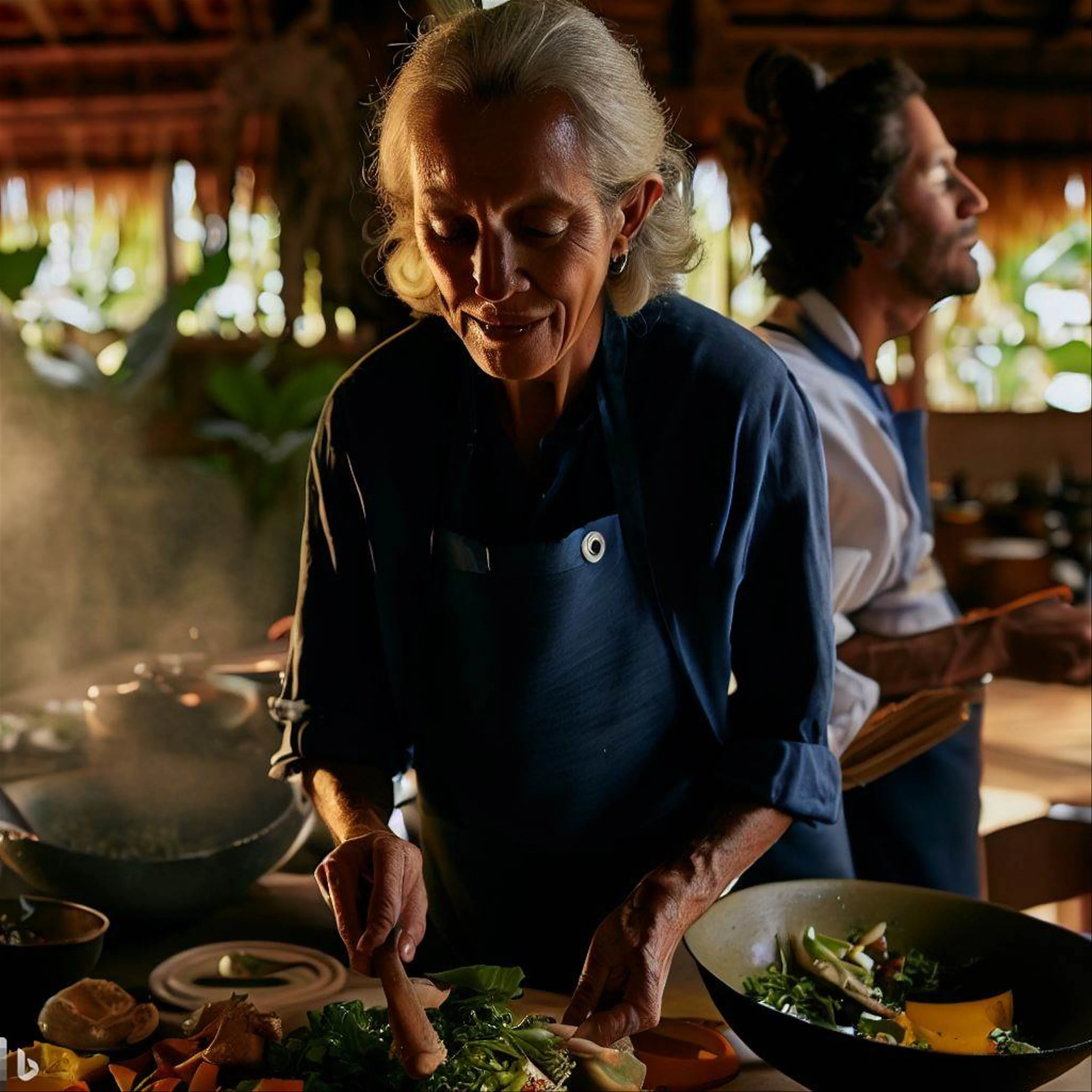
Food is more than just a way to nourish our bodies. It is also a way to express our identity, connect with others, and experience different cultures. Food can tell us stories about history, geography, politics, religion, and art. Food can also inspire us to travel, learn, and create.
In this article, we will explore some of the most fascinating and diverse cuisines in the world, and how they reflect the people and places that produce them. We will also share some tips on how to enjoy these cuisines at home or abroad, and how to expand your culinary horizons.
Italian Cuisine: A Celebration of Regional Diversity
Italy is one of the most popular destinations for food lovers, and for good reason. Italian cuisine is rich in variety, quality, and flavor, thanks to its diverse geography, climate, and history. Each region of Italy has its own specialties, ingredients, and traditions, influenced by local resources, cultural exchanges, and historical events.
Some of the most famous regional cuisines in Italy include:
- Tuscan cuisine: Known for its simplicity and use of fresh ingredients, such as olive oil, bread, cheese, beans, and herbs. Some of the typical dishes are ribollita (a hearty vegetable soup), pappa al pomodoro (a tomato and bread soup), and bistecca alla fiorentina (a thick steak grilled over charcoal).
- Neapolitan cuisine: Famous for its pizza, pasta, and seafood dishes, such as pizza margherita (a pizza topped with tomato sauce, mozzarella cheese, and basil), spaghetti alle vongole (spaghetti with clams), and zuppa di pesce (a fish stew).
- Sicilian cuisine: Influenced by the various cultures that have ruled the island over the centuries, such as Greek, Arab, Norman, Spanish, and French. Some of the distinctive ingredients are citrus fruits, almonds, pistachios, raisins, saffron, and capers. Some of the signature dishes are arancini (fried rice balls stuffed with cheese or meat), pasta alla norma (pasta with eggplant, tomato sauce, and ricotta cheese), and cannoli (crispy pastry tubes filled with sweet ricotta cream).
To enjoy Italian cuisine at home or abroad:
Try to eat seasonally and locally. Italian cuisine is based on using the best ingredients available at each time of the year and in each area. For example, in spring you can enjoy fresh artichokes, asparagus, peas, and strawberries; in summer you can savor tomatoes, zucchini, melons, and peaches; in autumn you can taste mushrooms, chestnuts, figs, and grapes; in winter you can warm up with cabbage, kale, oranges, and pomegranates.
Learn about the regional differences. Italian cuisine is not homogeneous or standardized. Each region has its own recipes, products, and customs. For example,
- In northern Italy you will find more dishes based on rice, polenta, butter, cheese, and meat;
- In central Italy you will find more dishes based on pasta, olive oil, vegetables, and fish;
- In southern Italy you will find more dishes based on tomatoes, garlic, capers, olives, and seafood.
Be adventurous and curious. Italian cuisine is full of surprises and discoveries. Don’t be afraid to try new dishes or ingredients that you may not be familiar with. You may find your new favorite food or flavor. For example,
- In Sardinia you can try casu marzu (a cheese with live maggots);
- In Emilia-Romagna you can try zampone (a stuffed pig’s trotter);
- In Piedmont you can try bagna cauda (a hot dip made with garlic, anchovies, and olive oil).
Thai Cuisine: A Harmony of Contrasting Flavors
Thailand is another country that attracts many food enthusiasts from around the world. Thai cuisine is renowned for its balance of sweet, sour, salty, spicy, and bitter tastes, as well as its use of aromatic herbs and spices. Thai cuisine also reflects the diversity of its regions and influences from neighboring countries such as China, India, Malaysia, and Laos.
Some of the most famous regional cuisines in Thailand include:
- Central Thai cuisine: The most widely known and influential style of Thai cooking that combines elements from different regions and cultures. Some of the typical dishes are tom yum goong (a spicy and sour soup with shrimp), pad thai (stir-fried rice noodles with eggs, tofu, bean sprouts, and peanuts), and massaman curry (a rich and mild curry with coconut milk, potatoes, and peanuts).
- Northern Thai cuisine: Influenced by the mountainous terrain and the cooler climate of the region, as well as the Lanna culture and the neighboring countries of Myanmar and Laos. Some of the distinctive ingredients are sticky rice, fermented fish sauce, and fresh herbs. Some of the signature dishes are khao soi (a noodle soup with chicken or beef and a curry-coconut broth), nam prik ong (a spicy dip with minced pork and tomatoes), and sai oua (a grilled sausage with herbs and spices).
- Southern Thai cuisine: Influenced by the coastal geography and the tropical climate of the region, as well as the Muslim culture and the neighboring countries of Malaysia and Indonesia. Some of the distinctive ingredients are coconut milk, turmeric, curry paste, and seafood. Some of the signature dishes are gaeng som (a sour and spicy curry with fish or shrimp), khao yam (a rice salad with herbs, dried shrimp, and coconut dressing), and khanom chin (rice noodles with various toppings).
To enjoy Thai cuisine at home or abroad:
Be open to different levels of spiciness. Thai cuisine is known for its fiery flavors, but not all dishes are spicy. You can also adjust the spiciness according to your preference by adding or avoiding chili peppers, chili sauce, or chili powder. For example,
- If you like mild dishes, you can try tom kha gai (a coconut chicken soup), pad see ew (stir-fried wide noodles with soy sauce), or khao pad (fried rice).
- If you like medium dishes, you can try som tam (a green papaya salad), pad krapow (stir-fried meat with basil), or panang curry (a thick and creamy curry).
- If you like hot dishes, you can try tom yum goong (a spicy and sour soup with shrimp), larb (a minced meat salad with lime juice and chili), or gaeng keow wan (a green curry).
Learn about the different types of dishes. Thai cuisine is not only about curries and noodles. There are many other types of dishes that you can explore and enjoy. For example,
- Appetizers: These are usually small bites that are served before or along with the main course. They can be fried, grilled, steamed, or wrapped. Some examples are satay (skewered meat with peanut sauce), tod man pla (fish cakes), and spring rolls.
- Salads: These are usually cold or room temperature dishes that are made with fresh vegetables, fruits, herbs, and meat or seafood. They are dressed with lime juice, fish sauce, sugar, and chili. Some examples are yam wun sen (a glass noodle salad), yam nua (a beef salad), and yam mamuang (a mango salad).
- Soups: These are usually hot and liquid dishes that are served in bowls or pots. They can be clear, creamy, or thick. Some examples are tom yum goong (a spicy and sour soup with shrimp), tom kha gai (a coconut chicken soup), and tom zap (a pork rib soup).
- Stir-fries: These are usually quick and easy dishes that are cooked in a wok over high heat. They can be made with meat, seafood, vegetables, noodles, or rice. Some examples are pad thai (stir-fried rice noodles with eggs, tofu, bean sprouts, and peanuts), pad krapow (stir-fried meat with basil), and pad pak ruam mit (stir-fried mixed vegetables).
- Curries: These are usually rich and flavorful dishes that are cooked in a pot over low heat. They can be made with meat, seafood, vegetables, or tofu. They are usually served with rice or bread. Some examples are massaman curry (a rich and mild curry with coconut milk, potatoes, and peanuts), panang curry (a thick and creamy curry), and gaeng keow wan (a green curry).
Be adventurous and curious. Thai cuisine is full of surprises and discoveries. Don’t be afraid to try new dishes or ingredients that you may not be familiar with. You may find your new favorite food or flavor. For example,
- In Chiang Mai you can try khao soi gai (a noodle soup with chicken and a curry-coconut broth);
- In Phuket you can try haw mok talay (a steamed seafood custard);
- In Bangkok you can try khao niao mamuang (sticky rice with mango and coconut milk).
End content
Food is a wonderful way to explore the world and learn about different cultures. By trying new cuisines, we can expand our palate, our knowledge, and our appreciation for diversity






